Key Takeaways
- Enhanced Engagement: Content Upgrades transform passive readers into engaged leads by offering tailored resources, elevating user interaction.
- Strategic Lead Generation: Unlock the potential for increased conversions as Content Upgrades prove to be a powerful tool in driving valuable leads.
- User-Centric Growth: Embrace a user-first approach with personalized content, fostering brand loyalty and paving the way for sustainable long-term growth.
In the dynamic landscape of digital marketing, staying ahead requires innovative approaches to engage and convert your audience. One such powerful tool gaining prominence is the strategic use of Content Upgrades.
These tailored enhancements to your existing content not only provide value to your audience but also serve as potent weapons in your marketing arsenal.
In this in-depth exploration, we delve into the nuances of Content Upgrades, demystifying their essence and uncovering the manifold reasons why they have become indispensable in modern marketing strategies.
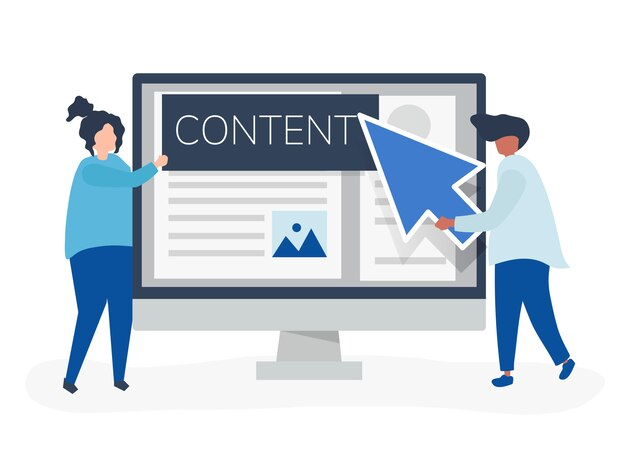
Defining Content Upgrades: A Tailored Approach to Audience Engagement
Content Upgrades, in essence, are the secret sauce that transforms ordinary content into an irresistible feast for your audience.
By understanding the unique needs and preferences of your target audience, these enhancements elevate user experience to new heights.
From downloadable resources like checklists and templates to exclusive access to premium content, Content Upgrades offer a personalized touch that resonates with your audience on a deeper level.
In this section, we dissect the various types of Content Upgrades, shedding light on their diverse forms and applications.
The Evolution of Marketing: Embracing Content Upgrades for Unparalleled Benefits
In an era where attention is a prized commodity, the strategic integration of Content Upgrades can revolutionize your marketing efforts.
As we explore the benefits, a compelling narrative unfolds – from skyrocketing lead generation and enhanced user engagement to the establishment of authority and trust.
Discover how Content Upgrades serve as catalysts for transforming casual visitors into loyal brand advocates, paving the way for a sustainable and effective marketing approach.
Crafting Excellence: A Blueprint for Creating Effective Content Upgrades
The art of creating impactful Content Upgrades involves a meticulous process of aligning with your audience, seamlessly integrating with your existing content, and delivering a visually stunning and valuable experience.
In this section, we provide a step-by-step guide on crafting Content Upgrades that captivate, inspire, and drive meaningful conversions.
From identifying your target audience to implementing user-friendly download mechanisms, each element is a crucial piece of the puzzle for creating content that truly stands out.
Strategic Integration: Elevating Your Marketing Game with Content Upgrades
The journey of Content Upgrades doesn’t end with their creation; their strategic integration is equally vital.
Explore how these upgrades can find their home within your blog posts, leverage pop-ups and exit-intent overlays, and seamlessly integrate into your social media and email marketing campaigns.
Uncover the tactics that ensure your Content Upgrades are not only seen but also embraced by your audience, maximizing their impact across various marketing channels.
Embark on this comprehensive exploration to not only understand the essence of Content Upgrades but to also empower your marketing strategy with a tool that has the potential to revolutionize audience engagement and conversion rates.
From the basics to advanced strategies, this guide is your roadmap to unlocking the full potential of Content Upgrades in the digital marketing realm.
But, before we venture further, we like to share who we are and what we do.
About AppLabx
From developing a solid marketing plan to creating compelling content, optimizing for search engines, leveraging social media, and utilizing paid advertising, AppLabx offers a comprehensive suite of digital marketing services designed to drive growth and profitability for your business.
AppLabx is well known for helping companies and startups use content marketing to drive web traffic to their websites and web apps.
At AppLabx, we understand that no two businesses are alike. That’s why we take a personalized approach to every project, working closely with our clients to understand their unique needs and goals, and developing customized strategies to help them achieve success.
If you need a digital consultation, then send in an inquiry here.
What Are Content Upgrades And Why Use Them For Marketing
- Understanding Content Upgrades
- Benefits of Using Content Upgrades
- How to Create Effective Content Upgrades
- Integrating Content Upgrades into Marketing Strategy
- Measuring and Analyzing Content Upgrade Performance
- Overcoming Challenges and Common Mistakes
- Future Trends and Innovations in Content Upgrades
1. Understanding Content Upgrades
In the realm of digital marketing, understanding the essence of Content Upgrades is pivotal for optimizing audience engagement and conversion rates.
Let’s delve into the intricacies of Content Upgrades, breaking down their definition, characteristics, and various types.

Definition and Characteristics of Content Upgrades
Content Upgrades are specialized enhancements to existing content offerings, designed to provide additional value to the audience in exchange for specific actions, typically lead capture.
Unlike generic lead magnets, Content Upgrades are tailored to the content they accompany, ensuring relevance and increased user engagement.
These enhancements can take various forms, such as downloadable resources, exclusive access to premium content, or interactive elements like quizzes and assessments.
Types of Content Upgrades
- Checklists and Cheat Sheets: Offering users a concise and actionable summary of key points, checklists and cheat sheets provide instant value. For instance, a blog post on “Effective Time Management” might offer a downloadable checklist for daily productivity.
- Templates and Worksheets: Especially popular in niches like finance or project management, providing customizable templates or worksheets enhances the practical utility of content. An article on “Budgeting Tips” could include a downloadable budget template.
- Ebooks and Whitepapers: Deeper dives into topics are facilitated through comprehensive ebooks or whitepapers. A blog post discussing “Digital Marketing Trends” could offer an in-depth whitepaper on the subject for download.
- Exclusive Video or Audio Content: For a more immersive experience, some content upgrades offer exclusive access to video or audio content. A blog post covering “Interviews with Industry Experts” might provide a downloadable podcast episode featuring those interviews.
Examples of Successful Content Upgrades in Marketing
- HubSpot’s Marketing Templates: HubSpot offers a variety of marketing templates and resources as Content Upgrades. These include customizable templates for social media calendars, blog editorial calendars, and more, providing practical value to marketers.
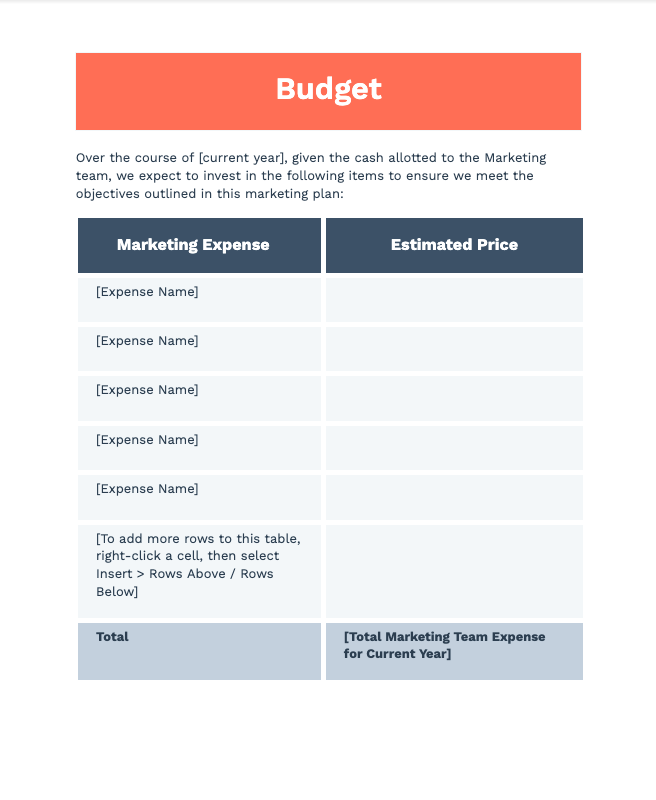
- Neil Patel’s SEO Checklist: Neil Patel, a renowned digital marketer, often uses Content Upgrades effectively. One notable example is his SEO checklist, which users can download after reading relevant blog content, ensuring actionable takeaways.
- ConversionXL’s In-Depth Guides: ConversionXL provides in-depth guides on topics like conversion optimization. These guides serve as comprehensive Content Upgrades to blog posts, offering additional insights and strategies.
Importance of Content Upgrades in Audience Engagement
The utilization of Content Upgrades goes beyond mere lead generation; it fosters a sense of reciprocity, establishing a deeper connection with the audience.
Content marketing generates over three times as many leads as outbound marketing and costs 62% less, and Content Upgrades play a crucial role in this process.
Furthermore, the personalization aspect of Content Upgrades is key.
80% of consumers are more likely to make a purchase when brands offer personalized experiences.
Content Upgrades, being tailored to individual content pieces, align perfectly with this trend, increasing the likelihood of user interaction and conversion.
2. Benefits of Using Content Upgrades
Understanding the benefits of integrating Content Upgrades into your marketing strategy is crucial for harnessing their full potential. From lead generation to building trust, let’s explore the myriad advantages that Content Upgrades bring to the table.

Increased Lead Generation
- Tailored Lead Magnets: Content Upgrades act as highly targeted lead magnets, capturing valuable user information in exchange for specialized content. 70% of lead gen advertisers cite improving lead quality as their most important objective.
- Conversion Rate Optimization: Content Upgrades are proven to boost conversion rates.
Website conversion rate is nearly six times higher for content marketing adopters than non-adopters.
Improved User Engagement
- Personalized User Experience: Content Upgrades provide a personalized experience, catering to the specific needs and interests of the audience.
- Interactive Elements: Including interactive elements in Content Upgrades, such as quizzes or assessments, enhances user engagement. Interactive content can generate 2x more conversions and 4-5x more pageviews than passive content.
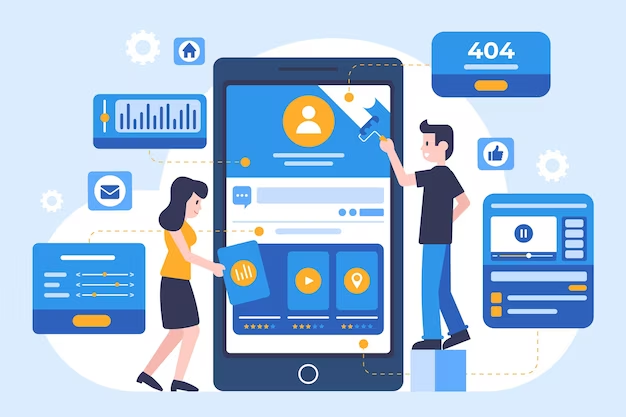
Enhanced Audience Segmentation
- Data-Driven Insights: The information collected through Content Upgrades enables detailed audience segmentation based on preferences and behaviors. This segmentation aids in crafting targeted and relevant marketing campaigns.
Segmented campaigns had a 14.31% higher open rate. - Personalization at Scale: Content Upgrades facilitate personalization at scale, allowing marketers to deliver customized content to different segments of their audience. This not only improves engagement but also nurtures long-term relationships.
Building Authority and Trust
- Demonstration of Expertise: Offering in-depth and valuable content through Content Upgrades positions your brand as an authority in the industry. 47% of buyers viewed three to five pieces of content before engaging with a sales rep.
- Establishing Trust: By consistently delivering high-quality, relevant content, brands using Content Upgrades build trust with their audience.
Quantifiable Marketing ROI
- Measurable Impact: The effectiveness of Content Upgrades is measurable, allowing marketers to gauge their ROI accurately. Tracking metrics such as conversion rates, click-through rates, and lead quality provides actionable insights for continuous improvement.
- Cost-Efficiency: Content Upgrades can be a cost-effective strategy, especially when compared to traditional advertising channels. Marketing generates 3x the number of leads than outbound marketing and costs 62% less.
3. How to Create Effective Content Upgrades
Crafting Content Upgrades that captivate your audience and drive meaningful engagement requires a meticulous approach.
In this section, we’ll guide you through the essential steps of creating compelling and effective Content Upgrades, drawing insights from successful examples and industry best practices.

Identify Target Audience and Persona
- Audience Segmentation: Before creating Content Upgrades, understand your audience segments. 74% of marketers said that targeted messages and personalization of emails improve customer engagement rates.
- User Persona Development: Develop detailed user personas to tailor Content Upgrades to specific needs and preferences. This ensures that your enhancements resonate with the diverse segments of your audience.
Align Content Upgrades with Existing Content
- Relevance is Key: Content Upgrades should seamlessly complement the existing content. For example, if your blog post discusses “Social Media Marketing Strategies,” a relevant Content Upgrade could be a downloadable checklist for creating an effective social media calendar.
- Address Pain Points: Identify the pain points or challenges your audience faces and create Content Upgrades that provide practical solutions. Solving real problems enhances the perceived value of your content.
Designing Compelling and Visually Appealing Upgrades
- Professional Graphics and Layouts: Invest in professional graphics and layouts for your Content Upgrades. 38% of people will leave a website if they find the layout unattractive.
- Consistent Branding: Maintain consistent branding across your Content Upgrades. Consistent brand presentation across all platforms can increase revenues by up to 23%.
Implementing User-Friendly Download Mechanisms
- Streamlined Opt-In Process: Simplify the opt-in process for users to access Content Upgrades. Reducing form fields from 11 to 4 can increase conversion rates by 120%.
- Mobile Optimization: Ensure that your Content Upgrades are optimized for mobile devices. In the first quarter of 2023, mobile devices (excluding tablets) generated 58.33 per cent of global website traffic, mobile-friendly content is crucial for reaching a broad audience.
Examples of Effective Content Upgrades in Action
- CoSchedule’s Headline Analyzer: CoSchedule offers a Headline Analyzer tool as a Content Upgrade for their blog post on “Writing Powerful Headlines.” This interactive tool provides users with insights on headline quality and has been instrumental in lead generation.

- Backlinko’s SEO Checklist: Brian Dean of Backlinko frequently uses Content Upgrades. An excellent example is his SEO Checklist, which users can download after reading relevant blog content, creating a valuable resource that aids in practical implementation.
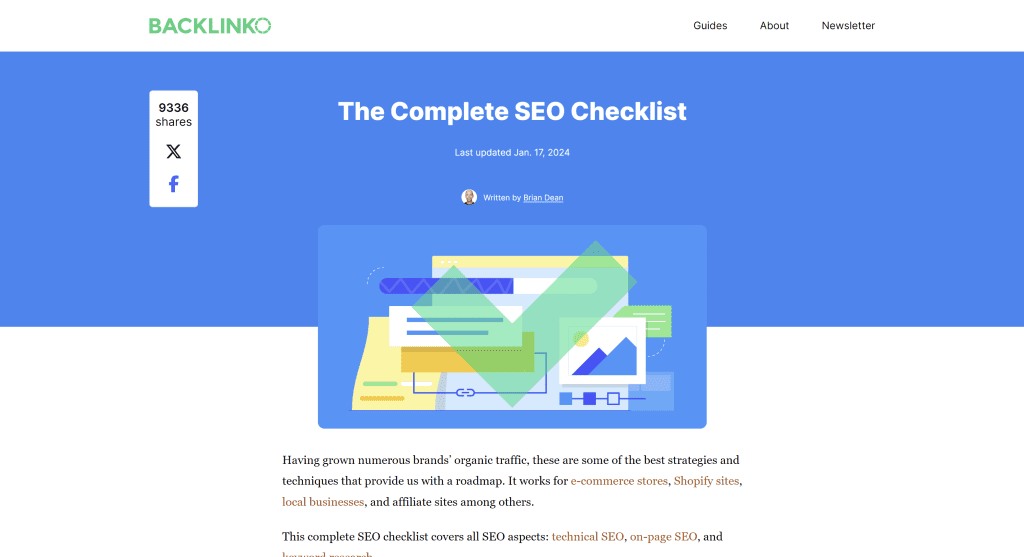
- Canva’s Design Templates: Canva provides design templates as Content Upgrades for their blog posts on graphic design tips. This strategy not only enhances user experience but also promotes the use of Canva’s design platform.
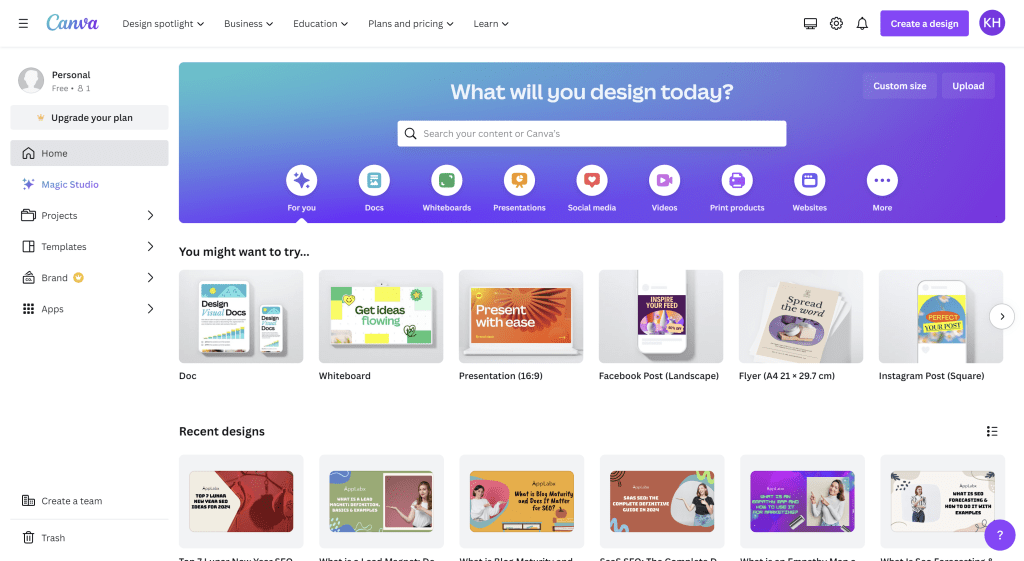
4. Integrating Content Upgrades into Marketing Strategy
Effectively integrating Content Upgrades into your marketing strategy requires a multi-faceted approach, ensuring visibility and engagement across various channels.
This section explores strategic placement within blog posts, utilizing pop-ups and exit-intent overlays, leveraging social media platforms, and incorporating Content Upgrades into email marketing campaigns.

Placement within Blog Posts
- Strategic Integration: Embedding Content Upgrades directly within blog posts enhances their visibility and relevance. Placing them at strategic points, such as after introducing key concepts or at the end of a post, ensures maximum exposure.
- Contextual Call-to-Action (CTA): Craft compelling and contextually relevant CTAs to prompt users to access Content Upgrades. Personalized CTAs performed 202% better than general ones.
Utilizing Pop-ups and Exit-Intent Overlays
- Timed Pop-ups: Implement timed pop-ups to capture user attention without disrupting the reading experience.
- Exit-Intent Overlays: Utilize exit-intent overlays to re-engage users before they leave your site. 10 to 15 per cent of lost visitors can be “saved” by using exit-intent popups.
Leveraging Social Media Platforms
- Teasers and Snippets: Tease your Content Upgrades on social media platforms with snippets or visual elements. Tweets with images receive 150% more retweets than tweets without images.
- Direct Links and CTAs: Provide direct links to Content Upgrades in social media posts, accompanied by clear CTAs.
Email Marketing Campaigns and Content Upgrades
- Segmented Email Lists: Segment your email lists based on user interactions and preferences, then target each segment with relevant Content Upgrades.
- Drip Campaigns: Incorporate Content Upgrades into drip email campaigns, delivering valuable content in a series. Automated emails get a click rate that’s 119% higher than standard broadcast emails.
Examples of Successful Integration
- DigitalMarketer’s Blog Post Placement: DigitalMarketer strategically places Content Upgrades within their blog posts, such as offering a downloadable guide on “Facebook Ad Strategies” after discussing key concepts.
This integration has contributed to a substantial increase in lead generation. - Neil Patel’s Exit-Intent Overlay: Neil Patel effectively uses exit-intent overlays to capture leads. Offering a Content Upgrade like a free marketing toolkit as users are about to leave has proven to be a successful strategy.
- Social Media Teasers by Buffer: Buffer utilizes social media platforms to tease upcoming Content Upgrades. For instance, sharing an engaging statistic from a downloadable report and directing followers to the full resource on their website.
5. Measuring and Analyzing Content Upgrade Performance
Measuring the performance of your Content Upgrades is critical for understanding their impact on lead generation, user engagement, and overall marketing strategy.
In this comprehensive section, we’ll explore key metrics to track, tools for analysis, and real-world examples of successful performance measurement.

Key Metrics to Track
- Conversion Rates:
- Definition: The percentage of visitors who take the desired action, such as downloading a Content Upgrade.
- Importance: High conversion rates indicate the effectiveness of your content and the appeal of your Content Upgrades.
- Click-Through Rates (CTR):
- Definition: The percentage of users who click on a link, typically in emails or on a website, out of the total who see the content.
- Importance: CTR provides insights into the attractiveness of your call-to-action (CTA) and the relevance of your Content Upgrade.
- Engagement Metrics:
- Definition: Metrics like time spent on page, scroll depth, and interactions within the content.
- Importance: Understanding how users engage with your content helps refine future Content Upgrades and content strategies.
Tools for Analyzing Content Upgrade Effectiveness
- Google Analytics:
- Capabilities: Tracks website and content performance, user behaviour, and conversions.
- Example Use: Set up goals in Google Analytics to monitor the conversion rates of users who download a Content Upgrade.
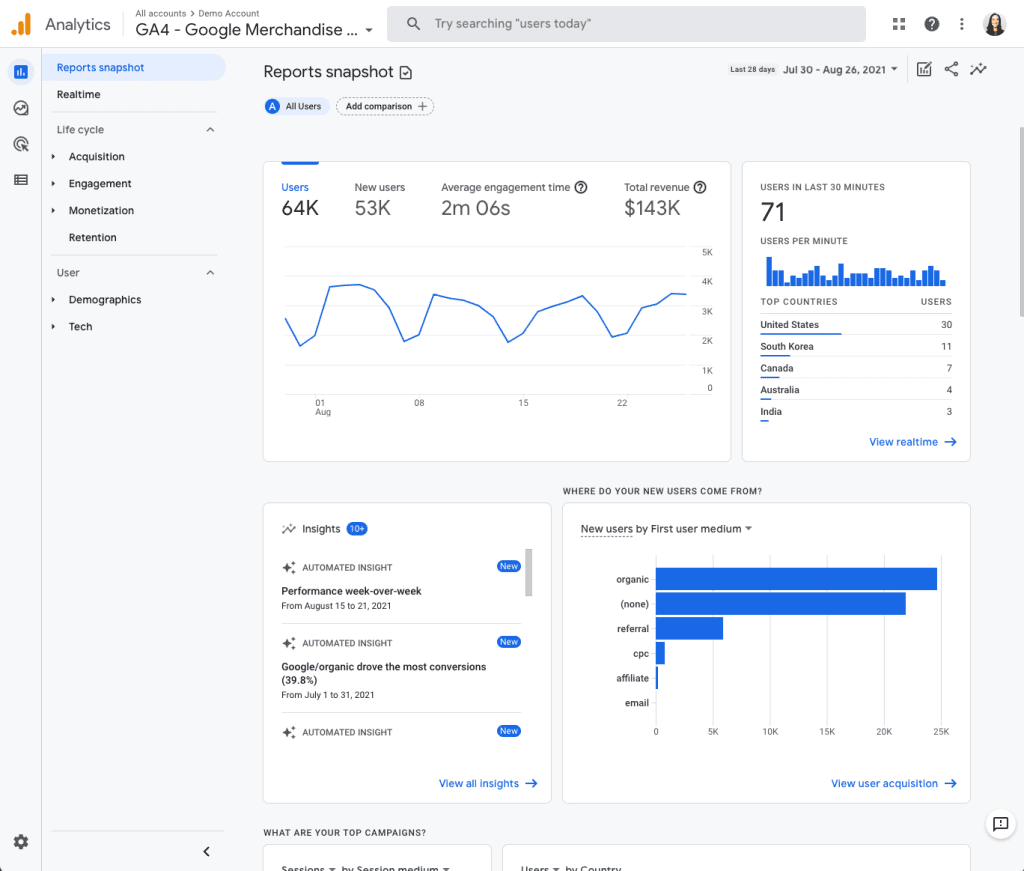
- Heatmaps (e.g., Hotjar):
- Capabilities: Visualizes user interactions on a webpage, highlighting areas of high and low engagement.
- Example Use: Identify which sections of your blog post or landing page receive the most attention, helping refine Content Upgrade placement.

- Email Marketing Analytics (e.g., Mailchimp, Campaign Monitor):
- Capabilities: Tracks email open rates, click-through rates, and user interactions.
- Example Use: Analyze the performance of emails containing Content Upgrade CTAs to optimize future email campaigns.
- A/B Testing Tools (e.g., Optimizely):
- Capabilities: Enables the comparison of two versions of a webpage or content to determine which performs better.
- Example Use: Test different CTAs, visuals, or headlines in Content Upgrades to identify elements that drive higher engagement.
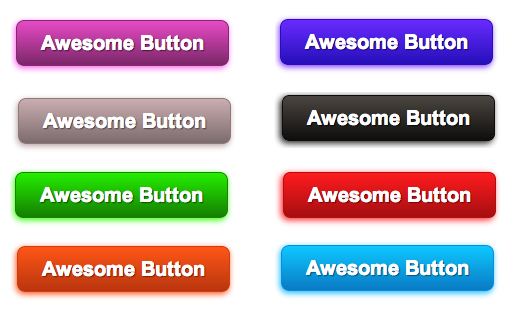
Measuring Content Upgrade Impact: Real-world Examples
- Neil Patel’s A/B Testing:
- Example: Neil Patel has extensively used A/B testing to optimize his Content Upgrades. By experimenting with different CTAs and visuals, he identified variations that significantly increased conversion rates.
- HubSpot’s Conversion Tracking:
- Example: HubSpot utilizes robust tracking in their platform to measure the performance of Content Upgrades. Their analytics reveal the conversion rates and user behavior associated with each upgraded piece of content.
- ConversionXL’s Engagement Analytics:
- Example: ConversionXL relies on detailed engagement analytics to refine their Content Upgrades. They track user interactions, such as time spent on page and scroll depth, to gauge the effectiveness of their enhancements.
Benefits of Data-Driven Optimization
- Continuous Improvement:
- Impact: Regularly analyzing data allows for iterative improvements in Content Upgrades, leading to increased performance over time.
- Personalization Refinement:
- Impact: User engagement data helps refine audience segmentation and tailor future Content Upgrades to individual preferences.
- Strategic Decision-Making:
- Impact: Informed by analytics, marketers can make strategic decisions on the placement, design, and promotion of Content Upgrades for maximum impact.
6. Overcoming Challenges and Common Mistakes
Navigating the landscape of Content Upgrades involves addressing challenges and avoiding common pitfalls that could hinder the effectiveness of your marketing efforts.
In this detailed section, we’ll explore potential hurdles and provide insights on overcoming them based on real-world examples and industry best practices.

Addressing User Privacy Concerns
- Challenge: Obtaining Consent for Data Collection
- Issue: Users are becoming more cautious about sharing personal information, and obtaining consent for data collection can be challenging.
- Solution: Clearly communicate the value of the Content Upgrade and implement transparent privacy policies. 83% of consumers are concerned about sharing personal data online, emphasizing the importance of transparent data practices.
- Challenge: Complying with Data Protection Regulations
- Issue: Content Upgrades involve collecting user data, necessitating compliance with data protection regulations like GDPR or CCPA.
- Solution: Implement robust consent mechanisms, clearly state how data will be used, and ensure compliance with relevant regulations. 65% of global consumers are more willing to engage and shop with brands that tell them exactly what they will do with their data.
Avoiding Overwhelming Design or Messaging
- Challenge: Design Overload and Clutter
- Issue: Overloading Content Upgrades with excessive design elements or information can overwhelm users, leading to a decline in engagement.
- Solution: Maintain a clean and user-friendly design.
- Challenge: Complicated Messaging
- Issue: Communicating the value of the Content Upgrade in a convoluted manner can result in user confusion and decreased conversion rates.
- Solution: Craft clear and concise messaging that highlights the benefits of the Content Upgrade.
Testing and Iterating for Optimal Results
- Challenge: Lack of Testing
- Issue: Failing to test different elements of Content Upgrades can lead to missed optimization opportunities.
- Solution: Implement A/B testing to experiment with variations in visuals, copy, and placement.
- Challenge: Ignoring User Feedback
- Issue: Disregarding user feedback prevents businesses from understanding audience preferences and refining Content Upgrades accordingly.
- Solution: Actively seek and analyze user feedback through surveys, comments, and social media. 77% of customers have a more favorable view of brands that ask for and accept customer feedback.
Strategic Adaptation to Evolving Trends
- Challenge: Resistance to Technological Advancements
- Issue: Being resistant to adopt new technologies or trends can hinder the adaptability and relevance of Content Upgrades.
- Solution: Stay informed about emerging technologies and trends in content marketing. For example, interactive content like quizzes and polls has shown to increase engagement. 81% agree that interactive content grabs attention more effectively than static content.
- Challenge: Ignoring Mobile Optimization
- Issue: Neglecting mobile optimization can result in a significant portion of the audience having a subpar user experience.
- Solution: Prioritize mobile responsiveness in design and functionality. With mobile internet usage surpassing desktop usage, ensuring a seamless mobile experience is crucial.
7. Future Trends and Innovations in Content Upgrades
As the digital landscape evolves, content marketers must stay ahead of the curve to maintain relevance and engage increasingly discerning audiences.
In this extensive exploration, we’ll delve into the emerging trends and innovations shaping the future of Content Upgrades, backed by data, statistics, and real-world examples.

Interactive Content: A New Dimension of Engagement
- Rise of Interactive Elements:
- Trend: Interactive content, such as quizzes, polls, and surveys, is gaining traction for its ability to enhance user engagement.
- Example: Brands like Buzzfeed have harnessed the power of interactive quizzes to captivate and retain their audience, showcasing the potential of this trend.
- Augmented Reality (AR) and Virtual Reality (VR) Enhancements:
- Trend: Integrating AR and VR elements into Content Upgrades provides immersive and memorable experiences.
- The AR and VR market is expected to grow at an annual rate of 10.77% (CAGR 2024-2028), resulting in a projected market volume of US$58.1 billion by 2028.
- Example: Home furnishing brands use AR to allow customers to visualize furniture in their homes before making a purchase, demonstrating the potential for AR in content experiences.
Personalization at Scale: Tailoring Content for Individual Preferences
- Advanced Personalization Algorithms:
- Trend: The use of sophisticated algorithms for hyper-personalization, tailoring Content Upgrades based on individual user behaviour and preferences.
- Example: Netflix’s recommendation engine is a prime example of personalized content delivery, adapting to individual viewing habits to keep users engaged.
- AI-Driven Personalized Experiences:
- Trend: Artificial Intelligence (AI) is being leveraged to analyze vast datasets and deliver highly targeted and relevant Content Upgrades.
- By 2025, AI is predicted to drive 95% of customer experience, showcasing its increasing role in personalized experiences.
- Example: Spotify utilizes AI algorithms to curate personalized playlists for users, showcasing the potential of AI in content delivery.
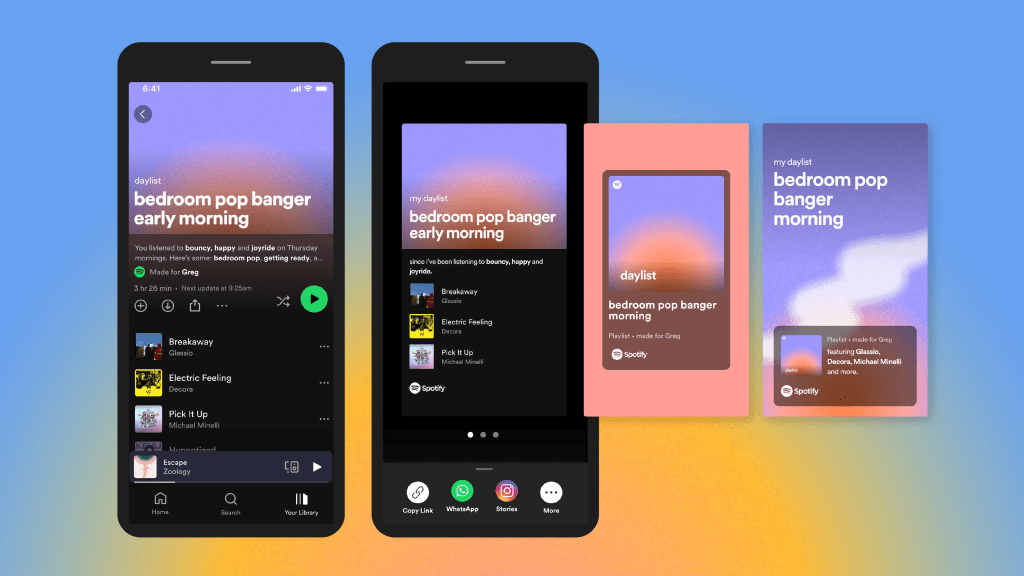
Integration with Emerging Technologies: Keeping Pace with Innovation
- Voice-Activated Content Upgrades:
- Trend: With the rise of smart speakers and voice-activated technology, creating Content Upgrades compatible with voice search is becoming crucial.
- Example: Brands are exploring voice-activated recipes and guides as Content Upgrades, adapting to the growing prevalence of voice search.
- Blockchain for Content Security and Transparency:
- Trend: Blockchain technology is being explored to enhance content security, ensuring transparent and traceable interactions.
- The global blockchain market size is expected to grow from USD 3.0 billion in 2020 to USD 39.7 billion by 2025, indicating widespread adoption across industries.
- Example: The use of blockchain in content distribution ensures authenticity and prevents unauthorized alterations, fostering trust among users.
Multichannel Integration: Meeting Users Where They Are
- Seamless Cross-Channel Experiences:
- Trend: Content Upgrades seamlessly integrated across various channels, providing a consistent and cohesive user experience.
- Companies with extremely strong omnichannel customer engagement retain on average 89% of their customers, compared to 33% for companies with weak omnichannel customer engagement.
- Example: Successful e-commerce brands ensure that their Content Upgrades are accessible across web, social media, and email platforms, creating a unified brand experience.
- Integration with Messaging Apps:
- Trend: Leveraging messaging apps as a platform for delivering Content Upgrades, catering to the growing trend of users preferring communication through these channels.
- Example: Brands are experimenting with delivering exclusive content and offers through messaging apps to engage users directly where they communicate the most.
Sustainability and Ethical Content Practices: A Growing Imperative
- Eco-friendly Content Strategies:
- Trend: The integration of sustainable and eco-friendly themes in Content Upgrades, aligns with the increasing importance of environmental consciousness.
- 81% of global consumers feel strongly that companies should help improve the environment.
- Example: Brands are incorporating eco-friendly practices into their Content Upgrades, showcasing commitment to sustainability and resonating with environmentally conscious audiences.
- Ethical Data Collection and Usage:
- Trend: Transparent and ethical data collection practices to build trust with users, considering the growing concerns about data privacy.
- Example: Brands explicitly communicate their data protection measures in relation to Content Upgrades, ensuring user trust and compliance with data regulations.
Conclusion
In the ever-evolving landscape of digital marketing, Content Upgrades emerge as a dynamic and indispensable tool, offering a pathway to enhanced engagement, lead generation, and overall business growth.
As we conclude this comprehensive exploration into “What Are Content Upgrades And Why Use Them For Marketing,” it becomes evident that these strategic enhancements hold the key to unlocking a new level of audience connection and conversion.
Embracing the Power of Content Upgrades
Content Upgrades represent a paradigm shift in content marketing, transcending traditional approaches. By providing valuable, targeted, and tailored resources, businesses can seamlessly guide users through a journey of continuous learning and interaction.
From downloadable guides and checklists to interactive quizzes and immersive experiences, the possibilities are as diverse as the audiences you aim to captivate.
Proven Impact on Lead Generation
The statistics speak volumes – Content Upgrades have proven to be a formidable force in lead generation. As conversion rates soar and engagement metrics amplify, businesses adopting this strategy gain a competitive edge.
Whether you’re a seasoned marketer or a budding entrepreneur, the ability to convert casual readers into dedicated subscribers and customers is a game-changer.
User-Centric Approach for Sustainable Growth
One of the hallmarks of Content Upgrades is their inherently user-centric nature. By aligning upgrades with user personas, addressing specific pain points, and delivering content tailored to individual preferences, businesses foster a deeper connection with their audience.
This user-first approach not only enhances brand loyalty but also sets the stage for sustainable, long-term growth.
Navigating Challenges and Embracing Innovation
As we explored the challenges and potential pitfalls associated with Content Upgrades, it’s clear that adaptability and innovation are key.
From addressing privacy concerns to embracing emerging technologies like augmented reality and artificial intelligence, businesses must evolve to stay ahead.
The integration of interactive elements, advanced personalization, and multichannel strategies positions marketers to navigate the future landscape with confidence.
Data-Driven Optimization for Continuous Improvement
Measuring the performance of Content Upgrades isn’t just a post-campaign ritual – it’s an ongoing commitment to excellence. Leveraging analytics tools, A/B testing, and user feedback, businesses can embark on a journey of continuous improvement.
The insights gained empower marketers to refine their strategies, enhance user experiences, and stay attuned to the evolving preferences of their audience.
Anticipating the Future
As we gaze into the future of Content Upgrades, the horizon is filled with exciting possibilities. Interactive content, artificial intelligence, voice-activated experiences, and sustainable practices are set to shape the next frontier.
By staying attuned to these trends and adopting an agile mindset, businesses can position themselves as trailblazers in an era of constant innovation.
In conclusion, Content Upgrades aren’t just a marketing strategy; they represent a commitment to delivering value, building relationships, and fostering a community of engaged and loyal followers.
As you embark on your Content Upgrade journey, remember that the key lies in understanding your audience, embracing innovation, and leveraging data to fuel your path forward.
The digital realm is dynamic, and with Content Upgrades as your ally, your marketing strategy can be equally dynamic, impactful, and poised for success.
If you are looking for a top-class digital marketer, then book a free consultation slot here.
If you find this article useful, why not share it with your friends and business partners, and also leave a nice comment below?
We, at the AppLabx Research Team, strive to bring the latest and most meaningful data, guides, and statistics to your doorstep.
To get access to top-quality guides, click over to the AppLabx Blog.
People also ask
What are the content marketing strategies?
Content marketing strategies include creating valuable, relevant, and consistent content to attract and engage a target audience. This involves understanding audience needs, utilizing various content formats (blogs, videos, infographics), leveraging SEO, and promoting content across relevant channels for optimal reach and impact.
What is the most effective content marketing strategy?
The most effective content marketing strategy is audience-centric, delivering valuable and tailored content. Focus on understanding audience needs, utilizing diverse content formats, optimizing for SEO, and leveraging data analytics to refine and personalize content for maximum impact and engagement.
What is content strategy and why do you need it?
Content strategy is a plan outlining the creation, distribution, and management of content to achieve business goals. It ensures cohesive, valuable, and aligned content across channels. It’s vital for brand consistency, audience engagement, and achieving measurable results in digital marketing.




































